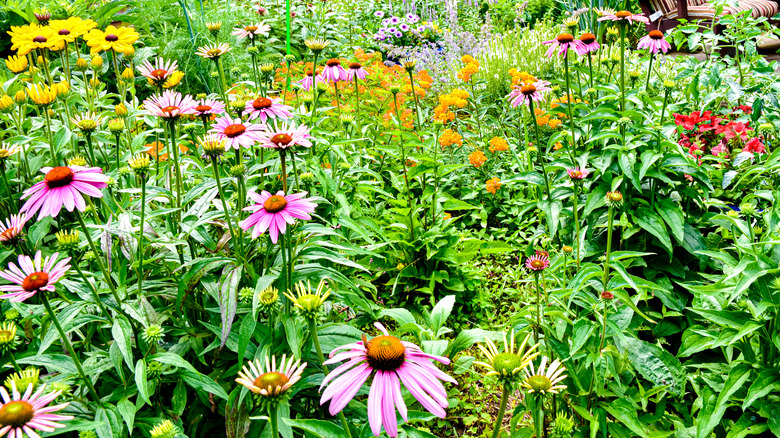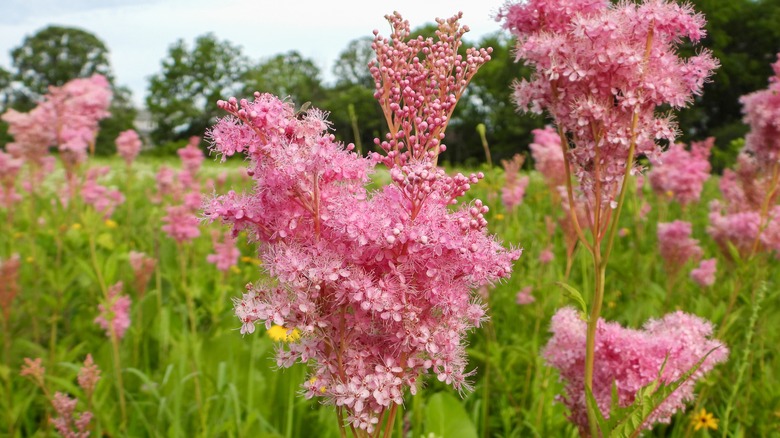The Tall Pollinator-Friendly Flower Our Professional Gardener Recommends Growing
Creating a pollinator food oasis in your background checks off so many boxes. Pretty flowers? Check. Get to feel good about helping the environment? Check. Lots of backyard entertainment? Check! And once you figure out how to start a pollinator garden, you will see just how much variety there is for you to play with. While the coneflowers and milkweed may be familiar faces, plenty of rockstars are still waiting to be placed in the right spot in your garden. In an exclusive interview, House Digest's professional gardener and owner of Albion Gardens, Peg Aloi, tipped us off on one such plant.
According to Peg, the queen of the prairie (Filipendula rubra) is a tall, native pollinator-friendly flower that you can blend into your garden design. Standing at a full height of 4 to 5 feet, its pink plumes tower above some of the best plants for your pollinator garden, so you can work it into the back of the bed. Peg also shared that because these flowers are full of pollen instead of nectar, they tend to attract a different cast of pollinators than you would expect. Bees, flies, and beetles are the frequent fliers, or crawlers, rather than butterflies and hummingbirds. You can have the best of both worlds by planting flowers that do attract the nectar-loving pollinators nearby.
How to grow queen of the prairie
While choosing between native and non-native plants is more complicated than you think, it doesn't hurt to consider a plant's origin for planting tips. The perfect spot for queen of the prairie will have plenty of sun and damp soil. In Peg Aloi's exclusive interview with House Digest, she explained that while this plant loves water, it still can't tolerate standing water. Avoid low-lying areas that tend to have puddles of water after a heavy rain, and instead, plant in an area that stays a little moist but allows the water to drain down into the ground. A boggy meadow is this flower's dream home.
Peg explained that rather than seed pods, Filipendula rubra spreads by rhizomes underground. Rhizomes look similar to tubers, but they are actually horizontal stems growing underground. As the rhizome spreads, new roots and vertical stems emerge from the bottom and top of it. According to Peg, while these flowering perennials will happily fill in gaps in your garden, they are not aggressive spreaders that will take over.

